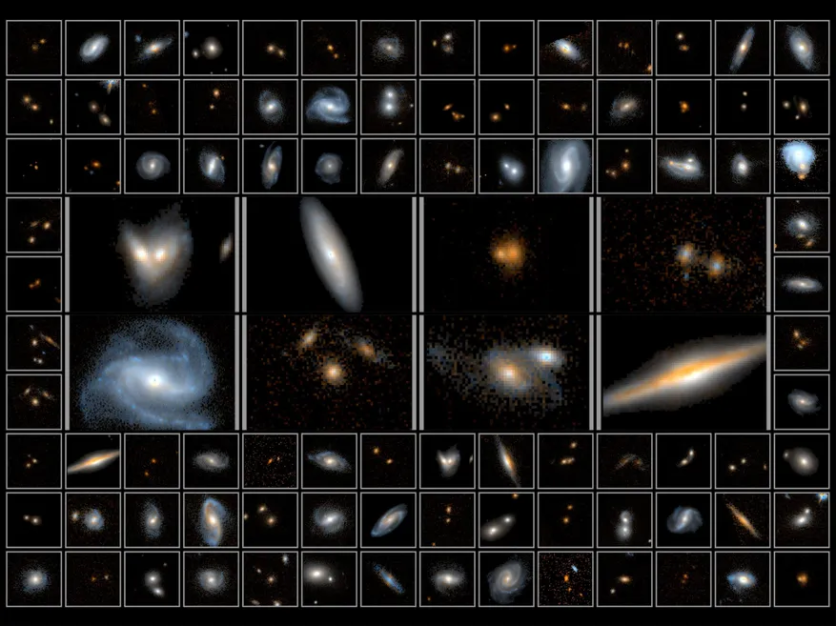Massive galaxies abound in the Universe, but astronomers don't fully grasp how they formed and evolved. The first galaxies developed at least 670 million years after the Big Bang, according to scientists. They understand that mergers and supermassive black holes are factors in galaxy formation, but they do not understand precisely how.
But with a new Hubble survey of galaxies, astronomers might find some answers.

Largest-Ever Near-Infrared Image
The Hubble Space Telescope has obtained the largest-ever near-infrared image of space and is thereby venturing into territories that James Webb Telescope will soon be exploring.
The remarkable image, according to Lamiya Mowla, an astrophysicist at the University of Toronto and the 3D-DASH's lead author, could shine a light on some of the Universe's rarest objects, such as monster galaxies formed by massive galaxy mergers or super violent black holes lingering in space.
3D-DASH stands for 3D-Drift And SHift, it is a study of the sky that maps star-forming areas using high-resolution near-infrared imaging and spectroscopy. Its goal is to locate unusual galactic objects that can be observed with the James Webb Space Telescope in the future.
As observed from Earth, Hubble's latest dataset covers an area nearly six times the size of the moon. You can check it out for yourself right here. What you will be encountering is a mosaic of Hubble's numerous images that were subsequently merged.
"Since its launch more than 30 years ago, the Hubble Space Telescope has led a renaissance in the study of how galaxies have changed in the last 10-billion years of the Universe," Mowla said in a statement.
3D-DASH is an advancement over an earlier project called COSMOS that employed spectroscopic, x-ray, and radio imaging to cover a 2 square degree equatorial field using numerous space-based and ground-based telescopes. It also comprises nearly 2 million galaxies spanning 75 percent of the Universe's age.
By assessing its complete contents in near-infrared, 3D-DASH improves on COSMOS. This is crucial because it allows astronomers to glimpse the farthest, most distant galaxies.
Drift and Shift
As noted by Universe Today, survey size is crucial in galaxy research. Surveys must detect unique events in the Universe in order to be useful: the gigantic galaxies, the earliest galaxies, and active black holes are all important for improving our scientific knowledge.
However, astronomers will need large photos to search through first just to find them.
But thanks to this new technology, the process should become easier.
DASH is the acronym for Drift And SHift. The novel imaging technology is similar to using a smartphone to take a panoramic photo, according to Mowla and her team.
Multiple photos are captured and stitched together to create one massive image. DASH is a big-time saver, taking photos in 250 hours that would have required 2000 hours before.
The first of each of the eight images is guided, while the last seven are unguided and acquired as the Hubble "drifts and shifts." The technique makes data reduction techniques more difficult, but the result is well worth it.
The James Webb will benefit from 3D-DASH since it will give a list of galactic targets for the Observatory, which is expected to begin its science investigations soon. Two of the telescope's overall science targets are 'Early Universe' and 'Galaxies Over Time.'
This article is owned by Tech Times
Written by Joaquin Victor Tacla
ⓒ 2025 TECHTIMES.com All rights reserved. Do not reproduce without permission.




